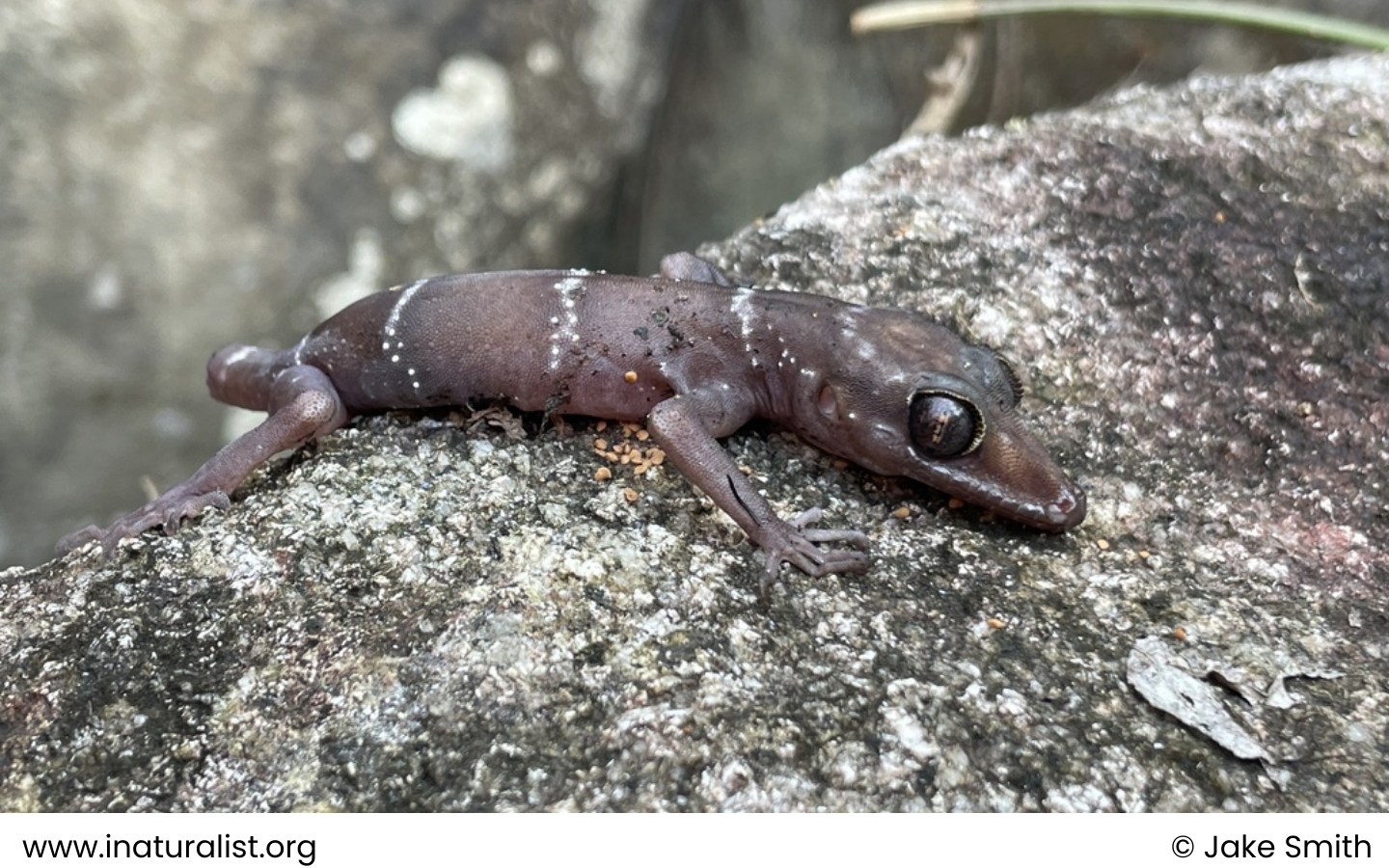
Science name: Cyrtodactylus eisenmanae – Ngo Van Tri, 2008
Taxonomic: Animalia>> Chordata>> Reptilia>> Squamata >> Gekkonidae >> eisenmanae
Species status: Endemic ; IUCN status: LC (Least Concern)
Description:
Physical characteristics:
Cyrtodactylus eisenmanae is a medium to large-sized gecko with a snout-vent length (SVL) of 76.8–89.2 mm.
The species has a long, slender body with limbs and digits that are equally slender. The original tail is exceptionally long, with a tail-to-body length ratio of 1.28.
It features 14 irregular longitudinal rows of weakly keeled tubercles at midbody between ventrolateral folds, and 19–22 paravertebral tubercles. Ventral scales number 44–45 at midbody between the ventrolateral folds, with subdigital lamellae numbering 22–25 on the first toe and 17–18 on the fourth toe. The enlarged scales on the heel and subcaudal scales are enlarged to form broad transverse plates.
The species lacks precloacal grooves and pores, and males have 4–6 enlarged femoral scales on each thigh.
Coloration and Appearance:
The gecko’s dorsal pattern is distinctive, with four narrow white bands set against a chocolate-brown background. There is also a similar banding pattern on the tail.
The head has a prominent band across the occiput, which enhances its striking appearance against the darker background.
Distribution and habitat:
Elevation: Found at elevations of around 200 meters above sea level.
Area: Endemic to Southwestern Vietnam, Cyrtodactylus eisenmanae is known from Hon Son Island, located in Lai Son commune, Kien Hai district, Kien Giang Province.
Habitat: This species primarily inhabits caves and rocky areas on limestone formations, typical of karst landscapes. It is often found in caves and other subterranean habitats, where it thrives in the microclimate of these cool, shaded environments.
Behaviour and ecology:
Lifestyle: Cyrtodactylus eisenmanae is a nocturnal and cave-dwelling species, often found clinging to the walls of rocky caves. It is well-adapted to subterranean habitats, where it hunts small insects and other invertebrates that inhabit these niches.
Reproduction: The species is oviparous, laying eggs during the reproductive season, though details on its reproductive biology remain sparse.
Diet: Its diet primarily consists of small insects found in its cave and rocky habitats
Conservation and status:
IUCN Red List Category and Criteria: Listed as Least Concern due to its stable population and lack of immediate threats. It was last assessed in 2017.
Threats: There are currently no major threats identified for this species, although its limited range on Hon Son Island could make it susceptible to habitat degradation in the future.
Remarks:
Cyrtodactylus eisenmanae was first described in 2008, and its specific epithet honors Dr. Stephanie Eisenman, who has significantly contributed to wildlife conservation efforts globally. Locally, this species is sometimes referred to as “Thằn lằn hang đá,” meaning “gecko from a rocky cave.” The species is known only from its type locality and has been described as one of the ‘rediscovered’ species after being considered lost for some time.
Crocodile Trail – The Best Birding Trail in Cat Tien National Park
If you’re a birder or nature photographer planning a trip to Vietnam, few places offer [...]
Cong Troi Trail – Top 1 Dalat Plateau Birding Trail Experience
If you’re a birder or nature photographer planning a trip to Vietnam’s Central Highlands, the [...]
How to Identify the Greater Sand Plover, Tibetan Sand Plover and Siberian Sand Plover
Identification Differences within the Sand Plover Complex: The sand plover group, which was traditionally divided [...]
Highlights of Cat Tien National Park Reptiles and Amphibian Endemics
Spanning over 71,350 hectares of tropical forests, grasslands, and wetlands, Cat Tien National Park is [...]
Highlights of Cat Tien National Park Mammals in a World Biosphere Reserve
In addition to reptiles and birds, Cat Tien National Park is also rich in mammals, [...]
Kontum Plateau Endemic and Highlight bird
Kontum Plateau Endemic And Highlight Bird species like Chestnut-eared Laughingthrush and top birding routes while [...]